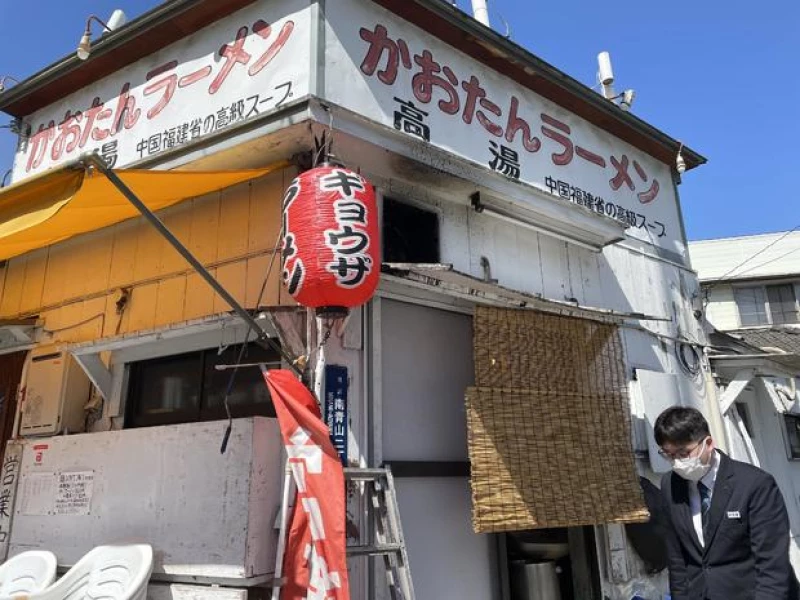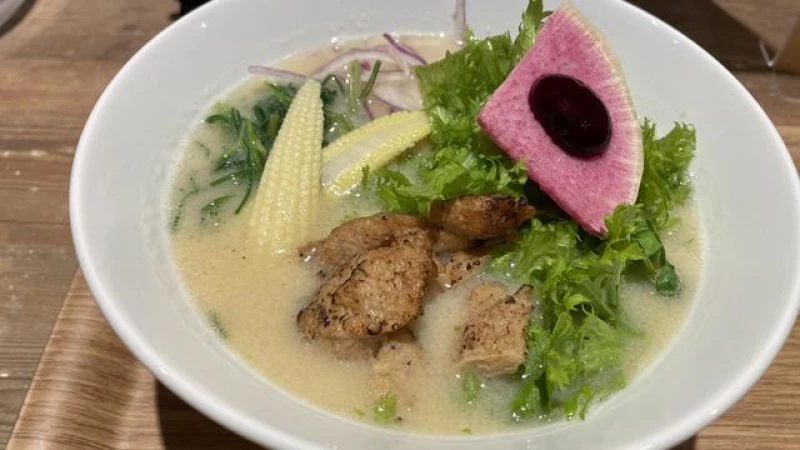Tokyo — Japan's iconic ramen shops have traditionally been known for serving the working class with no-frills, where patrons slurp down hot bowls of noodles at simple counters.
However, the landscape of ramen joints is evolving, transitioning from the old cement-floored greasy spoons to trendy establishments with stylish decor, artisanal crockery, and even fusion flavors. What's more surprising is that women are now flocking to these establishments.
The Emergence of the "Ramen Girls"
The English version of Japan's Nikkei daily recently highlighted a new phenomenon known as "girl ramen" that is taking the culinary scene by storm.
In the article, cultural critic Kaori Shoji linked this trend back to 2015, the year when the inaugural "Ramen Girls Festival" took place in Yokohama. The festival's creator, Satoko Morimoto, also runs a jewelry line featuring pasta-themed, diamond-studded pieces.
The feminization of ramen reflects larger socio-economic trends, particularly the increasing purchasing power of Japan's female workforce, which reached a historic 30 million in 2022.
For those seeking female-friendly ramen spots, they can now turn to the social media profiles of Morimoto's proud colleagues in the noodle community, like Tokyo Ramen Women on Instagram or musician and bar owner Riona Aizawa, who claims to have devoured 461 bowls of ramen in the past year alone.
Ramen Reverie
"An umami sensation tingles on my palate before the miso flavor dances on my taste buds!" the mysterious host of the "Delicious Hokkaido" Facebook page exclaimed in a recent post, clearly lost in the enchantment of ramen.
She delved into the essence of the vegetable paste-infused soup, the lingering absence of an aftertaste, the crispness of the finely-cut scallions, and how "the noodles stand strong," offering a distinct flavor profile from the fragrant broth they accompanied.
When it comes to evaluating ramen, female critics scrutinize every detail, from the tenderness of the braised pork slices to the brand reputation and chewiness of the noodles. According to online reviews, female diners tend to prefer lighter broths. The traditional ingredient lard — if included at all — should not be overwhelming, many suggest, but instead delicately dispersed in small pieces on the broth's surface.

Ramen and Romance
Matchmaking platform Koigaku has offered guidance to those seeking love on the dos and don'ts of "ramen dates," highlighting that ramen eateries can be a tricky terrain of awkward slurping, stained attire, and potent breath.
Nevertheless, with the right approach, the site proposes, even a bowl of ramen can pave the way to a romantic connection.
"In modern times, many ramen establishments have a chic ambiance," Koigaku points out, "offering menus tailored to appeal to women."
The advantages of enjoying Japan's soul food on a date are often overlooked, as highlighted by the website. Unlike fancy restaurants, ramen shops usually do not require reservations and the meal is quick.
At a price of only ¥1,000 per person (less than $7), ramen is affordable enough to share without causing any tension, and it also reduces the risk of a dine-and-dash situation.
However, it is advised not to opt for ramen on a first date, and diners are cautioned against wearing white jeans.
Global Appreciation for Noodles
Ramen, once a humble dish, has gained a sense of sophistication in recent years due to its worldwide recognition. In 2015, Tsuta, a ramen restaurant in Tokyo's Sugamo district, became the first ramen eatery to receive a Michelin star for its "black truffle-scented" Shoyu Soba.
While Tsuta is no longer on the prestigious list, nearly twenty other ramen establishments in Tokyo were acknowledged in the latest Michelin guide.
Japan was once considered a minor player in global tourism until 2013, but it has since become a top destination for 2024, with an anticipated record 33 million visitors.
This influx of new chefs and customers has sparked innovation in the industry.
To cater to a more diverse clientele, ramen has evolved in different directions, leading to the rise of Halal and vegan options as alternatives to the traditional pork-based noodle soups.
Ramen Revolution: Culinary Innovations Shake Up Tokyo's Ramen Scene
Renowned chefs from various culinary backgrounds are making their mark in the world of ramen. A French chef, with a background in fine dining, has introduced a unique twist to Tokyo's culinary landscape with the opening of Ebimaru Ramen. The star dish features lobster bisque-infused noodles, garnished with a slice of baguette and a dollop of sour cream.
Meanwhile, in the vibrant Shinjuku district, "Rahmen Eddie" has captured the attention of food enthusiasts not only for its artistic decor but also for its creative take on traditional ramen. Diners can indulge in bowls of ramen infused with unconventional flavors like yuzu and ricotta cheese. One of their specialties includes a "cappuccino ramen" served in a coffee cup, a delectable blend of truffle, cream, and porcini mushrooms for a unique dipping experience.

Another standout is Takanochume's interpretation of maze-soba, a broth-less ramen dish. This colorful creation features a medley of fresh vegetables atop noodles, reminiscent of a classic pasta primavera dish.
Is Ramen Reinventing Itself?
Breaking away from its traditional image, the ramen scene is embracing innovation with pink-colored noodles and wheat gluten molded into heart shapes, appealing to a wider audience beyond its traditional male demographic.
As some ramen establishments struggle to stay afloat, this wave of creativity and upscale offerings could be the key to survival. Tokyo Shoko Research reported a significant decline in ramen shops in 2023, marking the toughest year for the industry since 2009, with a staggering 74 closures nationwide.
According to a report by Business magazine Diamond Online, the competitive nature of the ramen industry, coupled with low barriers to entry, often leads to a high rate of failure for ramen shops. In fact, it is estimated that two-thirds of ramen shops will close within three years of opening.
Some owners are turning to more expensive ingredients in an attempt to attract customers, but this strategy may ultimately decrease profits. Despite this challenge, the evolving definition of "ramen" and the support of women and international visitors are helping to sustain the popularity of this beloved national dish.







